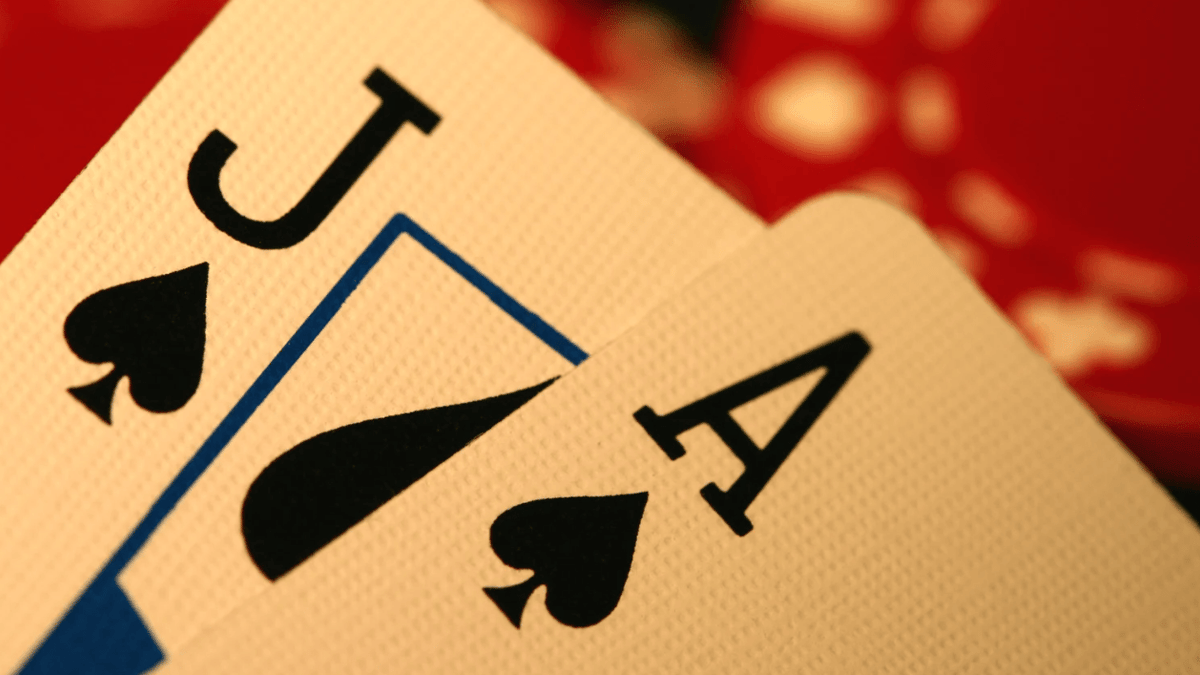Card Counting: What It Is and How It Works

Blackjack is one of the few casino games where skilled players can gain an edge over the house through a technique called card counting.
By keeping track of high- and low-value cards remaining in the deck, players can adjust their bets and decisions to shift the odds in their favor.
Over the years, legendary card counters and teams have made headlines - none more famous than the MIT Blackjack Team.
In the 1990s, this group of MIT and Harvard students used sophisticated counting techniques to win millions in Las Vegas, inspiring the bestselling book Bringing Down the House and, later, the movie 21.
But before you book a flight to Vegas or head to your nearest US online casino, here’s what you need to know and why card counting probably isn’t worth the effort.
Put simply, a deck rich in high cards (10s, face cards, and aces) increases the chances of hitting a blackjack and makes doubling down more effective, while a deck with more low cards favors the dealer.
Recognizing these shifts lets skilled players bet more when conditions are favorable and minimize losses when they aren’t.
The most common method is the Hi-Lo system, where:
- Low cards (2–6) are assigned a value of +1
- High cards (10, J, Q, K, A) are assigned a value of -1
- Middle cards (7–9) are counted as 0
As cards are dealt, the player keeps a running count. A positive count suggests that more high cards remain in the deck, while a negative count indicates that more low cards remain.
To make practical betting adjustments, card counters convert the running count into a true count by dividing it by the estimated number of decks remaining in play. The higher the true count, the greater the player's edge - allowing for strategic bet increases and improved decision-making.
Why Card Counting Doesn’t Work Online
Card counting is only effective when the deck is not shuffled after every hand.
In land-based casinos, blackjack games typically use a shoe with multiple decks. While the cards are shuffled periodically, enough hands are played before that happens for counting to be viable.
Online blackjack, however, almost always uses a Random Number Generator (RNG) that effectively reshuffles the deck after every round, making card counting useless.
Even in Live Dealer blackjack, where physical cards are used, most online casinos shuffle the shoe frequently or cut off a significant portion of the deck, preventing counters from gaining a meaningful edge.
The Challenges of Card Counting
Card counting isn’t especially difficult to learn, but pulling it off in a real casino - without drawing attention - is another matter. That’s why it’s not widely practiced and why many who try give up quickly.
But why would you need to be discreet?
Casino Detection & Back-Offs
While not illegal, casinos don’t have to allow it. As private businesses, they can refuse service to anyone - and often do when they suspect a player is counting cards.
Put simply, if you’re winning and they think you’re counting, they won’t let you continue.
Experienced casino staff can spot card counters, and those ‘caught’ might hear something like, “We think you’re counting cards, so we don’t want your action,” or they may simply be asked to leave.
This is commonly known as being ‘backed off’ in a casino.
Ultimately, any skilled blackjack player who manages to turn the odds in their favor will eventually attract unwanted attention.
Bankroll Management
Even if a player avoids detection, bankroll management is another major challenge.
Card counting provides only a small edge, meaning short-term losses are inevitable. Counters need a large enough bankroll to withstand downswings, carefully adjusting their bets based on the count without overextending.
Successful card counters use techniques like the Kelly Criterion to optimize bet sizes and manage risk, but even the best strategy can't eliminate variance completely.
Betting too aggressively can lead to ruin before the advantage plays out, while table limits can restrict bet increases when the count is in their favor.
Card Counting vs. Cheating
To be clear, card counting is not cheating. Cheating typically involves devices, software, palming cards, manipulating chips, distracting dealers, or even conspiring with casino employees.
Card counting, on the other hand, is simply a form of Advantage Play - using skill, memory, and intelligence to optimize decisions based on the game’s conditions.
That said, even knowing how to gain an advantage doesn’t guarantee you’ll win every session. Card counters operate on the same principle as the casino itself: having a small edge and playing long enough to let that edge pay off.
Over time, if a card counter overcomes short-term variance, they can come out ahead.
If you play perfect basic strategy without counting cards, the house edge is typically around 0.5%–1%. Most players, however, don’t play optimally, which increases the casino’s edge.
Adding card counting with discipline and strict bankroll management can shift the edge in the player's favor, typically by 1%–2% in the long run.
The hardest part for a proficient card counter isn’t gaining an edge - it’s avoiding detection and being allowed to keep playing.
Common Myths About Card Counting
- You need a photographic memory: Card counting doesn’t require memorizing every card, just keeping a simple running count and adjusting bets accordingly.
- Card counting guarantees winnings: It provides a small long-term edge, but short-term losses are inevitable.
- It works in every blackjack game: Some casino conditions, like continuous shuffling machines or frequent deck penetration limits, make card counting ineffective.
Challenges Card Counters Face in Casinos
- Heat from the casino: Casinos train staff to detect suspicious betting patterns, sudden bet increases, and behavioral cues that indicate counting.
- Short deck penetration: Many casinos cut off a large portion of the shoe before dealing, limiting the number of counted cards and reducing a counter’s edge.
- Disguising your play: Professional card counters often use team play, act like casual gamblers, and occasionally make poor plays to avoid detection.
Card Counting – Our View
Card counting is a proven way to gain an edge in blackjack over the long term, but success takes more than just knowing the system.
The real challenge lies in finding favorable games, managing variance, and avoiding detection. While it’s not a guaranteed path to profit, those with discipline, patience, and the ability to stay under the radar may find it a rewarding skill.
That said, long losing streaks are inevitable, and grinding out an advantage can be tedious - even before you factor in back-offs.
Finally, remember that card counting doesn’t work online. Whether you’re playing standard RNG online blackjack or a Live Dealer game, frequent shuffling and other measures prevent players from gaining an edge.














